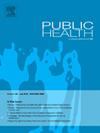评估慢性疾病管理的临床指南:它们能实现个性化护理吗?
IF 3.9
3区 医学
Q1 PUBLIC, ENVIRONMENTAL & OCCUPATIONAL HEALTH
引用次数: 0
摘要
目的:描述全科医生(gp)如何个性化干预慢性疾病患者,并比较实践与相应的指南。研究设计:范围综述,然后是法国全科实践的多中心横断面研究。方法:我们确定了与糖尿病、高血压、血脂异常、失眠和抑郁相关的指南中描述的个性化要素。然后,在对这些疾病进行任何咨询后,全科医生完成药理学(PI)和非药理学干预(NPI)问卷,以收集:何时,在哪些变量上(临床,生物学特征等),如何以及由谁进行干预,以及干预中哪些是个性化的。使用科恩的Kappa分析了全科医生的实践和指南之间的一致性。结果:我们在10个指南中提取了204个个性化元素,gp在161个PI中描述了1512个个性化元素,在131个NPI中描述了1313个个性化元素。个性化主要基于患者的一般特征(20.6%的PT;NPI占24.8%)和处理特征(PI占14.5%;新产品导入率的9.8%)。全科医生占64.6%的PI和79.4%的NPI患者的偏好。对于PI, gp和指南之间的一致性在全球范围内较低(kappa = 0.21[0.11;0.31]),但治疗特征为中等(kappa = 0.48 [0.09;0.87])和高(kappa = 1.00[1.00;1.00])。对于NPI,全球一致性非常低(kappa = 0.16[0.10;0.25]),但处理特征为中等(kappa = 0.59[0.19;1.00])和疾病特征(kappa = 0.48[0.12;0.87])。结论:指南没有充分描述裁剪变量和干预措施的后续修改。它们需要被更好地描述,以促进一种既对每个病人个性化又在医生之间同质的药物。本文章由计算机程序翻译,如有差异,请以英文原文为准。
Evaluating clinical guidelines for chronic disease management: Do they enable the personalization of care?
Objective
To described how general practitioners (GPs) personalize interventions for patients with chronic diseases and compare practice with the corresponding guidelines.
Study design
Scoping review followed by a multicentre cross-sectional study in French general practices.
Methods
We identified elements of personalization described in guidelines related to diabetes, hypertension, dyslipidaemia, insomnia and depression. Then, GPs completed questionnaires for pharmacological (PI) and non-pharmacological interventions (NPI) after any consultation for these diseases to collect: when, on which the variables (clinical, biological characteristics, etc.), how and by whom the interventions were personalized, and what was personalized in the interventions. Agreement between GPs' practices and guidelines was analyzed using Cohen's Kappa.
Results
We extracted 204 elements of personalization in 10 guidelines, and GPs described 1512 elements of personalization in 161 PI and 1313 elements in 131 NPI. Personalization was mainly based on patients' general characteristics (20.6 % of PT; 24.8 % of NPI) and treatments characteristics (14.5 % of PI; 9.8 % of NPI). GPs accounted for patients’ preferences in 64.6 % of PI and 79.4 % of NPI. For PI, the agreement between GPs and guidelines was globally low (kappa = 0.21[0.11; 0.31]) but moderate for treatment characteristics (kappa = 0.48 [0.09; 0.87]) and high for disease characteristics (kappa = 1.00[1.00; 1.00]). For NPI, agreement was globally very low (kappa = 0.16[0.10; 0.25]) but moderate for treatment characteristics (kappa = 0.59[0.19; 1.00]) and disease characteristics (kappa = 0.48[0.12; 0.87]).
Conclusions
Guidelines insufficiently described the tailoring variables and the subsequent modifications of the interventions. They need to be better described to promote a medicine that is both personalized to each patient and homogeneous between physicians.
求助全文
通过发布文献求助,成功后即可免费获取论文全文。
去求助
来源期刊

Public Health
医学-公共卫生、环境卫生与职业卫生
CiteScore
7.60
自引率
0.00%
发文量
280
审稿时长
37 days
期刊介绍:
Public Health is an international, multidisciplinary peer-reviewed journal. It publishes original papers, reviews and short reports on all aspects of the science, philosophy, and practice of public health.
 求助内容:
求助内容: 应助结果提醒方式:
应助结果提醒方式:


